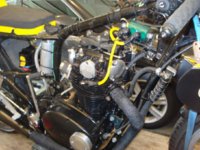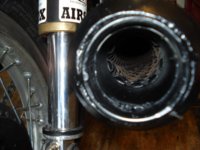cooltouch
XS650 Addict
XSives,
I know that road racers will do anything they can, within rules limitations of course, to get more fractional horsepower out of their machines, but this same need generally doesn't apply to those of us who use our bikes on the streets. And I know that wrapping headers is one way of extracting just a little more exhaust velocity out of the XS650 motor, which translates into a freer breathing machine, which means more horsepower can be generated. But how much, I guess is what I'm asking.
I suspect a lot of us wrap our headers cuz they like the looks. But I imagine that others here want to get as much out of their engines as they possibly can, just like dedicate road racers. Me, I have mixed feelings about wrapping my bike's exhaust up so's it looks like its got Ace bandages on both sides. Like it's sprained both legs or something
So, those of you who've done it -- does it make a detectable difference -- or did you do it just cuz it looks cool?
I know that road racers will do anything they can, within rules limitations of course, to get more fractional horsepower out of their machines, but this same need generally doesn't apply to those of us who use our bikes on the streets. And I know that wrapping headers is one way of extracting just a little more exhaust velocity out of the XS650 motor, which translates into a freer breathing machine, which means more horsepower can be generated. But how much, I guess is what I'm asking.
I suspect a lot of us wrap our headers cuz they like the looks. But I imagine that others here want to get as much out of their engines as they possibly can, just like dedicate road racers. Me, I have mixed feelings about wrapping my bike's exhaust up so's it looks like its got Ace bandages on both sides. Like it's sprained both legs or something

So, those of you who've done it -- does it make a detectable difference -- or did you do it just cuz it looks cool?





